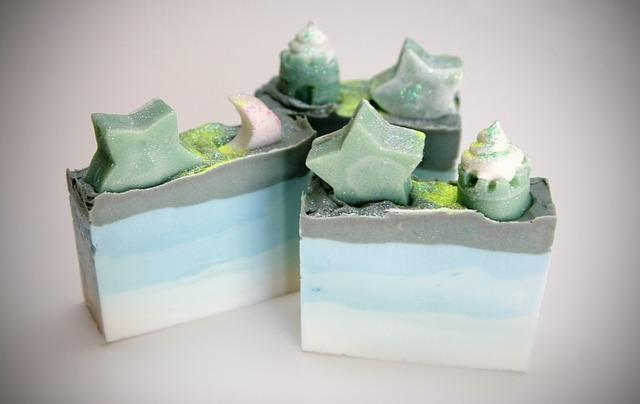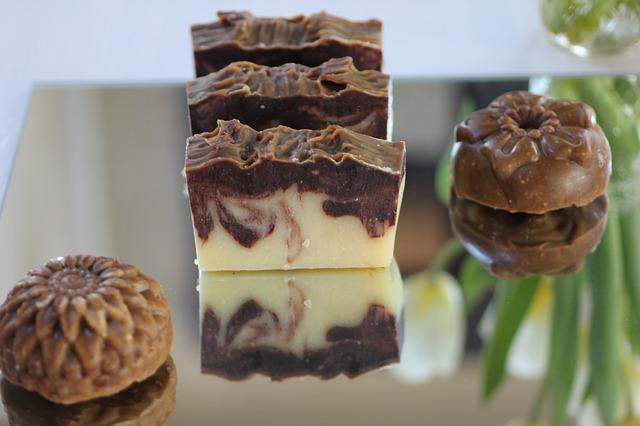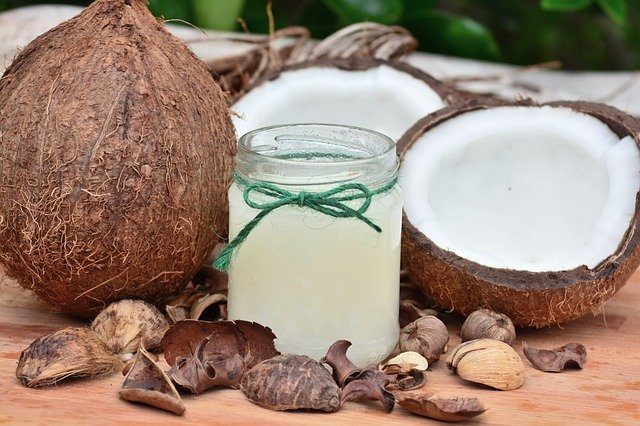Soap Calculators: Lye Soap Recipes, SAP Values, and Formulations
Posted on September 08 2022
Handcrafted Soap
Making your own soap can seem daunting, but it's really not that difficult! And with a lye calculator, it's even easier. Lye calculators take the guesswork out of soap-making by telling you exactly how much lye or sodium hydroxide and olive oil to use in your recipe.
There are many lye calculators available online, but my favorite is SoapCalc. SoapCalc is free to download and to use and provides information about your soap recipe. It will tell you the saponification value (SAP value) of your oils, as well as the lye concentration and water discount.
Soap.Club's original natural soap bars are a great example of what you can create with just a few simple ingredients!
To use SoapCalc, simply enter the amount and type of oil you want to use, and it will do the rest!
Table of Contents
- What Is A Lye Soap Calculator?
- What Is the Difference Between Sodium Hydroxide And Potassium Hydroxide?
- What is SAP value?
- What Are Lye Soap Formulations?
- What Is Lye Concentration?
- What Is Water Discount?
- The Most Common Lye Solution Strengths in Soap-making
- How Do I Calculate My Water Amount For My Lye Solution?
- Super-fatting your Lye Soap (Lye Discounting)
- Lye Soap Formula Example
- Working Lye Soap Recipes
- Take Care When Working With Lye
- Frequently Asked Questions
- Conclusion

What Is A Lye Soap Calculator?
A soap calculator is a tool that helps you determine the amount of soapmaking lye, or sodium hydroxide, needed to create a specific type of soap. This is important because too much lye can be dangerous, and insufficient lye will result in an ineffective soap. Potassium hydroxide can also be used.
There are many different lye calculators available online, but they all work in basically the same way. You simply input the desired recipe ingredients (e.g., olive oil, water, etc.), and the calculator will provide you with the amount of lye needed.
What Is the Difference Between Sodium Hydroxide And Potassium Hydroxide?
The main difference between sodium hydroxide and potassium hydroxide is that sodium hydroxide is more commonly used in soap-making because it is less expensive than potassium hydroxide. Sodium hydroxide can also be more caustic than potassium hydroxide, so it is important to take care when working with it.
If you are new to soap-making, we recommend using sodium hydroxide. Once you are more familiar with the process, you can experiment with potassium hydroxide, which works well for liquid soap. Always take all the necessary precautions when working with lye, as it can be dangerous if not used properly.
What is SAP value?
The SAP value is the number that tells you how much lye is required to saponify (or turn into soap) a specific fat or oil like olive oil or coconut oil. This information is important because it allows you to fine-tune your soap formulas for perfect results.
You can find the SAP values of various oils and fats online or use a soap calculator to determine this value.
What Are Lye Soap Formulations?
Lye (sodium hydroxide) soap formulations are recipes that tell you how to mix different oils and fats together to create a specific type of soap during the soap-making process. These recipes generally include the amount of lye and each ingredient needed and the SAP value for each.
There are many different soap formulations available online, so you should be able to find one that meets your specific needs even for old-fashioned lye soap.
What Is Lye Concentration?
Lye concentration is the percentage of lye in the water used to make soap. This information is important because it helps you determine how much lye to use in your recipe. The lye (sodium hydroxide) concentration can be found on the label of the soap calculator or online.
What Is Water Discount?
Water discount is the amount of water that is removed from a lye soap formula. This is done to prevent the soap from being too soft. The water discount can be found on the label of the soap calculator or online.
The Most Common Lye Solution Strengths in Soap-Making
Lye solution strengths can vary depending on the type of lye you use and the recipe you follow, but some common amounts of lye concentrations are used in soap making.
30% lye concentration: This very strong lye solution is typically only used for making solid soaps.
20% lye concentration: This strong lye solution is typically used for making hard bar soaps like Soap.Club's very own natural bar soaps.
10% lye concentration: This medium lye solution is typically used to make liquid soaps.
5% lye concentration: This lye solution is typically used for making cream soaps.
Often recipes rely on lye solution strengths ranging from 25% to 28%. This means lye can make up 25 to 28 percent and the remainder (78.3% to 77.7% of solution). The 5% Lye Solution contains 25 % Lye with 75 % water.
How Do I Calculate My Water Amount For My Lye Solution?
Another factor is water consumption. Lye is added to that water before combining it with oil. This element has much more flexibility and can be viewed as an open question rather than a preference problem.
Generally, it's best to choose between two possible alternatives. Water is based on 30-40% of the total ingredients. Then calculate water-lye ratios. Both options work, just depending on your preferred preference.
The amount of water you'll need for your lye solution will depend on your lye concentration. To calculate the amount of water needed, simply multiply the lye concentration by 0.4 (for example, if you're using a 20% lye concentration, you would need 8 ounces of water).
For example,
Using a 30% lye concentration, you would need 12 ounces of water.
Using a 20% lye concentration, you would need 8 ounces of water.
Using a 10% lye concentration, you would need 4 ounces of water.
Using a 5% lye concentration, you would need 2 ounces of water.
Super-fatting your Lye Soap (Lye Discounting)
Super-fatting is the process of adding extra oils like coconut oil to a soap formula. This is done to provide a buffer between the lye and the skin, which can help to prevent irritation.
To calculate the amount of oil needed for super-fatting, simply subtract the lye concentration from 100 (for example, if you're using a 20% lye concentration, you would need 80 ounces of oil for super-fatting).
For example,
Using a 30% lye concentration, you would need 70 ounces of oil for super-fatting.
Using a 20% lye concentration, you would need 80 ounces of oil for super-fatting.
Using a 10% lye concentration, you would need 90 ounces of oil for super-fatting.
Using a 5% lye concentration, you would need 95 ounces of oil for super-fatting.
Homemade Lye Soap Formula Example
Now that you know how to calculate the lye or sodium hydroxide concentration, water discount, and lye solution strength, you can create your soap formula.
To get started, you'll need to choose a lye soap calculator. There are many different lye calculators available online, so be sure to choose one that meets your specific needs. Once you've chosen a soap calculator, simply enter the desired information into the fields provided.
For this example, we'll be using a soap calculator with the following information:
Lye Concentration: 20%
Water Discount: 10%
Lye Solution Strength: 28%
Super-fatting: 5%
As you can see, we've chosen a lye concentration of 20%, a water discount of 10%, and a lye solution strength of 28%. We've also chosen to super fat our soap with olive or coconut oil by 5%.
Now that we have all the necessary information, we can begin creating our soap formula.
- First, we'll need to calculate the amount of lye needed for our recipe. To do this, we'll multiply the lye concentration by the total weight of our oils. In this example, we're using 64 ounces of oil, so we'll multiply 20% (0.2) by 64 ounces to get 12.8 ounces of lye.
- Next, we'll need to calculate the water needed for our lye solution. To do this, we'll multiply the lye concentration by 0.4 (for a 20% lye concentration, we would need 8 ounces of water). In this example, we'll need 3.2 ounces of water.
- Finally, we'll need to calculate the amount of oil needed for super-fatting. To do this, we'll subtract the lye concentration from 100%. In this example, we're using a 20% lye concentration, so we'll subtract 20% from 100% to get 80%. This means we'll need 51.2 ounces of oil for super-fatting.
Now that we have all the necessary information, we can create our soap formula!
Working Lye Soap Recipes
Lye Olive Oil Soap Recipe #1
Ingredients:
-12.8 ounces of lye
-3.2 ounces of water
-51.2 ounces of oil (we used olive oil, but feel free to use any oil you'd like)
Instructions:
1. Combine the required amount of lye and water in a safe place, such as a lye-safe container or a glass bowl because of the chemical reaction that can take place.. Be sure to wear gloves and eye protection when handling lye.
2. Stir the lye and water until the lye has completely dissolved.
3. Add the oils to your lye solution and stir until combined.
4. Pour the soap mixture into your mold and allow it to set for 24-48 hours.
5. Cut the soap into bars and allow it to cure for 4-6 weeks.
And that's it! You've now created your very own soap formula. Be sure to experiment with different oil combinations and lye concentrations to find a soap recipe that works best for you.
If you're new to soap-making, I recommend starting with a simple soap formula. This Olive Oil Soap recipe is a good place to start.
Soap Recipe #2
What You'll Need:
- lye calculator
- olive or coconut oil
- sodium hydroxide
- water
- lye safety gear (gloves, goggles, and ventilation)
Instructions:
1. Calculate your recipe using the lye calculator.
2. Gather your ingredients and lye safety gear.
3. Carefully measure out the amount of lye and water called for in your recipe.
4. Add the lye to the water, stirring carefully until the lye has dissolved.
5. Measure the olive oil and add it to your lye/water mixture.
6. Stir until trace is achieved. (Trace is when the soap mixture thickens and leaves a light trail when you drizzle it across the surface.)
7. Pour your soap into molds, and allow to set for 24-48 hours.
8. Cut and cure your soap as desired. (Curing allows your soap to age, making it milder and longer-lasting.)
There you have it! Simple soap recipes that anyone can make. Give it a try, and see how easy it is to make your own soap!
Take Care When Working With Lye
Lye is a caustic substance that can cause burns, so it's important to take care when working with it. Be sure to wear gloves and eye protection, and work in a well-ventilated area.
If you accidentally get lye on your skin, rinse the area immediately with cold water. If you get lye in your eyes, flush them with cold water for 15 minutes and seek medical attention immediately.
Lye soap can be made safely if you take the proper precautions. So go ahead and give it a try! You may be surprised at how easy it is to make your own soap recipes.
Frequently Asked Questions
What does the soap calculator do?
The soap calculator helps you create soap recipes that are tailored to your specific needs. You can input the type of oil you want to use, the lye concentration, and the super-fatting level, and the calculator will tell you how much lye, water, and oil you'll need for your recipe.
What is the best lye calculator?
There are a few different lye calculators available, but we recommend SoapCalc. It's easy to use and provides comprehensive information about your recipe.
What are the benefits of lye soap?
This soap has several benefits. It is gentle and moisturizing, making it ideal for people with sensitive skin. This soap also has anti-fungal and antibacterial properties, making it a good choice for people with skin conditions like acne.
How do you calculate the oil percentage in soap?
To calculate the oil percentage in soap, simply divide the total weight of the oils by the total weight of the lye and water. For example, if your recipe uses 100 grams of lye and 200 grams of water, and the total weight of all the oils is 300 grams, then the oil percentage would be 50%.
Is lye necessary for soap?
Lye is necessary for soap as it is the substance that reacts with the oils to create soap.
Can lye soap be used on the face?
Yes, it can be used on the face, but it is important to choose a gentle recipe with a low lye concentration. You may also want to consider adding additional oils or butter to your recipe to help offset the drying effects of lye.
Is lye soap safe for babies?
Yes, it is safe for babies, but you'll want to choose a gentle recipe with a low lye concentration.
Is lye soap good for your skin?
This soap is good for your skin as it is gentle and moisturizing. Lye soap also has anti-fungal and antibacterial properties, making it a good choice for people with skin conditions like acne.
Can lye soap be used on color-treated hair?
This soap can be used on color-treated hair, but choosing a gentle recipe with a low lye concentration is important. You may also want to consider adding additional oils or butter to your recipe to help offset the drying effects of lye.
Conclusion
Lye soap can be made safely if you take the proper precautions. So go ahead and give it a try! You may be surprised at how easy it is to make your own soap recipes. Just be sure to follow the instructions carefully and always wear gloves and eye protection when working with lye.
Or you can go the easy way and buy our handcrafted natural soaps. You can even sign up for our monthly membership to save you money!
Happy soap-making!
You can learn a lot more from the posts on our blog or just follow the links below for individual posts.
7 Proven Benefits Of Olive Oil Soap
How To Use Essential Oil For Soap Making
Molding Soap: The Best (And Inexpensive) Soap Molds
What To Use Lavender For: 12 Things To Do With Lavender
Coconut Oil Benefits In Soap: Skin Nourishing Qualities
Benefits of Cold Process Soap Making
Natural Acne Remedies: 11 Effective Home Treatments: Part One
Natural Face Remedies for Acne Vulgaris: Part Two
How To Make Pure White Natural Soap From Goat Milk Recipe
Monthly Natural Soap Memberships: Best Soap Subscription of 2022





Follow Us